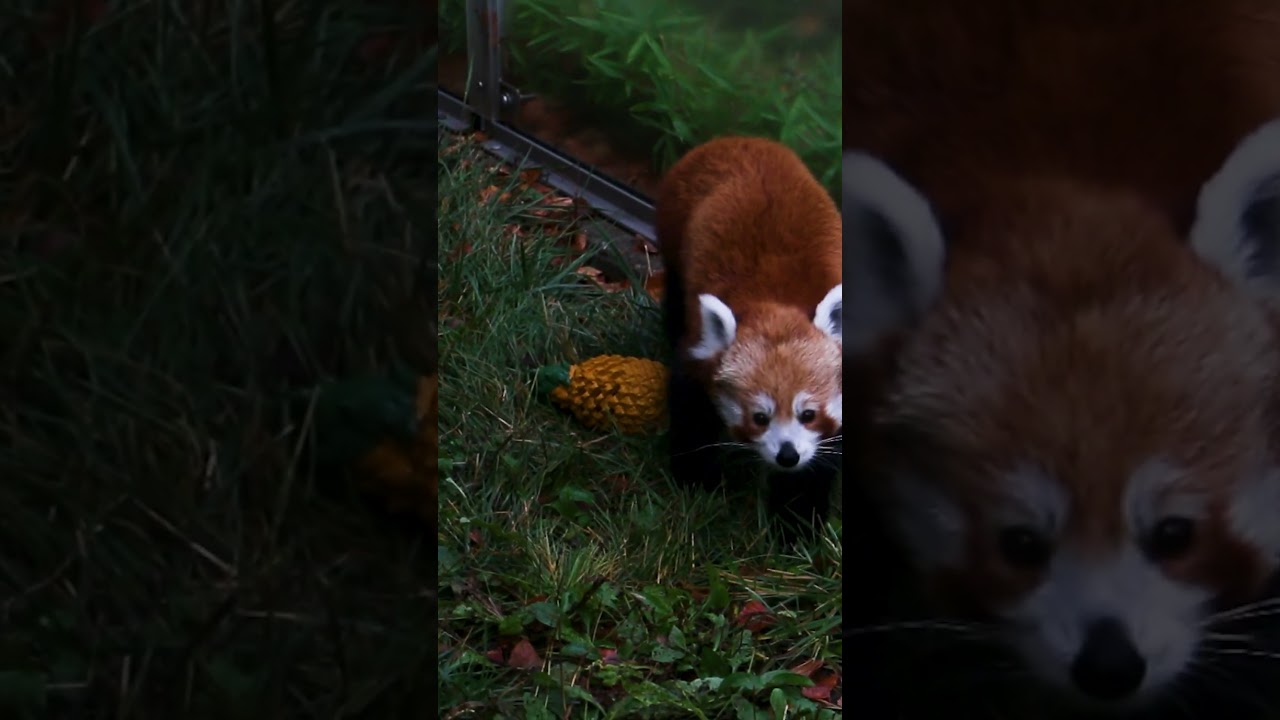– Discovering the ‘original’ panda: an introduction to the charming and lesser-known Red Panda.
– Exploring the Red Panda’s unique characteristics, habitat, and behaviors at Blank Park Zoo.
– Unveil the significance of conservation efforts for the red panda and how zoos contribute to their survival.
Have you ever encountered an animal so enchanting that it seems almost mythical? Nestled amongst the leafy canopies of the Himalayas and the bamboo undergrowth of Blank Park Zoo is a creature with fiery fur and a mischievous grin that might capture your heart. It’s the Red Panda, a species whose name predates its more famous black-and-white relative by almost five decades. Let’s embark on a whimsical odyssey to reveal the unique allure of the Red Panda that can transform a routine zoo visit into a moment of pure magic.
The story of the Red Panda, or Ailurus fulgens, is not just about its adorable visage; it’s a tale that spans continents and conservation efforts. Picture a mammal the size of a house cat with a bear-like body, a bushy tail, and a face that resembles a raccoon but is closer to weasel relatives. This is our protagonist, agile and acrobatic, often found perched casually on a tree branch, munching on bamboo.
Blank Park Zoo has carefully crafted an exhibit that mirrors the Red Panda’s natural habitat, immersing visitors into a wild world shrunk to an accessible scale. The enclosure features ample vertical space, allowing these adept climbers to exhibit their natural behaviors. Visitors often catch them engaged in a balancing act, negotiating the fine line between gravity and their arboreal lifestyle.
But what truly sets the Red Panda apart beyond their undeniable cuteness? For one, their diet is peculiar for animals in their taxonomic family. While they occasionally eat fruits, nuts, and eggs, bamboo constitutes the mainstay of their diet, making them predominantly herbivorous. It’s a dietary choice that dictates their habitat requirements, which, in turn, influences their conservation status.
The concept of the Red Panda being the ‘original’ panda is not just an interesting historical footnote; it’s a commentary on the evolution of knowledge in the natural sciences. Discovered in 1825, a good amount of time before scientists formally recognized the Giant Panda in 1869, the Red Panda’s classification has been debated. Once thought to be related to the raccoon and bear families, it’s now classified in its unique family, Ailuridae—a testament to its unique evolutionary lineage.
As we traverse the Red Panda’s world, it’s impossible not to be touched by the vulnerability of their existence: habitat loss, poaching, and the pet trade threaten their survival. In response, Blank Park Zoo doesn’t just exhibit these fascinating creatures; it serves as a conservation beacon. Participating in the Species Survival Plan, the zoo aids in managing and maintaining genetically diverse populations, ensuring that the whispers of Red Pandas will linger in the forests they call home.
Yet, the plight of the Red Panda is not its sole defining trait. It’s their charismatic behavior that resonates with visitors. Who can remain unmoved watching them perform ritualistic grooming, using their delicate, semi-retractable claws to maintain their luscious fur? Or the tender moments shared between mother and cubs, a nurturing bond that challenges our very perception of wildness?
And while the facts about the Red Panda are compelling, nothing compares to witnessing their everyday antics firsthand. Blank Park Zoo offers more than just a showcase; it provides an educational platform where knowledge and awe walk hand in hand. Interactive talks and feedings allow insights into their dietary needs, discussing why bamboo, a plant of seemingly low nutritional value, sustains these forest-dwelling sprites.
As seasons change, so does the Red Panda’s behavior. In the winter, their thick fur and bushy tails provide warmth, displaying an adaptability that is as fascinating as it is vital. Summer months see them more sluggish during the day, choosing cooler evenings to exhibit their vivacity—an intriguing adaptability that demonstrates their resilience in an ever-changing environment.
Moreover, understanding the Red Panda’s reproductive habits provides a window into the delicate balance of their continued existence. Our role in their conservation becomes more crucial with a heightened sense of smell for communication and a breeding season confined to only a few days a year. Breeding programs, such as those employed by Blank Park Zoo, don’t just aim to increase numbers; they strive to preserve the genetic diversity necessary for a robust population.
In narrating the Red Panda’s existence, we come face to face with our responsibility toward their kind. Zoos have transformed from menageries to centers for conservation and education—a place where fascination sparks a deeper connection and, hopefully, a desire to protect. By doing so, we don’t just safeguard a species; we preserve the enchantment they cast upon the world.
The Red Panda’s journey is an interwoven fabric of wonder, challenge, and hope. At Blank Park Zoo, we’re given the extraordinary opportunity to step into their silent world – to observe, learn, and become advocates. Through understanding comes the power to make a difference, and in the amber gaze of a Red Panda, we find an invitation to become part of a narrative much grander than ourselves.
So, the next time you wander through a zoo, pause at the Red Panda exhibit. Watch how the sun glints off their russet fur, listen to the soft rustle of bamboo leaves, and remember the legacy these ‘original’ pandas carry—a legacy we are now a part of, a legacy that beckons us to ensure their whispered songs endure in the wilds from where they once freely roamed.
*****
Source Description
Did you know red pandas were discovered before the giant pandas? This makes them the original pandas!

